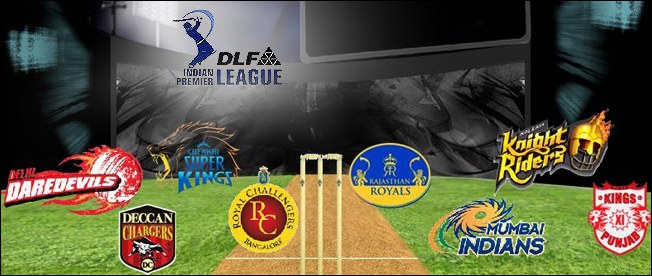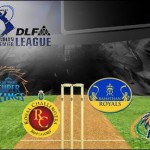At a quick glance, American football and cricket don’t seem to have much in common. A person from India might see football as a classic American pastime, associated with small-town life or the huge ‘gridiron’ of the NFL (National Football League).
Meanwhile, an American might think of cricket as an English sport. While cricket originated in England in the 16th century, plenty of fans know that the sport is biggest in India. The India Premier League is the country’s largest sports following—and that following far outnumbers any NFL stats.
However, both American football and cricket have a lot in common in terms of fandom. Both the NFL and the IPL draw in massive crowds who cheer for their home team with the hopes that their franchise will take a championship title.
Sure, the NFL may only have one-fourth of the IPL’s viewership, but its fans are just as dedicated as their Indian counterparts. In fact, Super Bowl futures odds are already available despite the fact that the regular season hasn’t yet started, and the next Super Bowl final won’t be played until January of 2021.
Meanwhile, in India, the IPL Finals (which occur in May every year) draw in millions upon millions of viewers. It’s also the second-highest-paid sports league in the world behind North America’s NBA (National Basketball League). However, the NBA doesn’t put on a final show quite like either the IPL or the NFL.

Twelve Years of the IPL
Though cricket got its start in southeast England centuries ago, the sport’s popularity in India can’t be paralleled. In fact, many studies have been dedicated to investigating why, precisely, cricket is so popular in India (though you may have to read Telugu to learn).
The IPL got its start in 2008 to capitalize on the sport’s popularity and bring teams together by city. Currently, the IPL represents the eight cities of Bangalore (Royal Challengers), Chennai (Super Kings), Delhi (Capitals), Hyderabad (Sunrisers), Mumbai (Indians), Kolkata (Knight Riders), Punjab (Kings XI), and Rajasthan (Royals).
Originally, there was trouble finding sponsors and creating agreements between multi-owner franchises, but the league’s popularity amongst sports fans across South Asia encouraged executives to sign on the dotted line.
There were also many questions about the structure of the IPL. Since 2008, the league has followed a format similar to the NBA and the English Premier League.
Each team plays opponents twice in a round-robin format. The two teams with the best season record play in a qualifying match, as do the third and fourth-place teams. Between the top two teams, whoever wins the qualifying match goes on to the IPL finals. However, the losing team will have one last chance to qualify for the IPL finals.
The third and fourth-place teams from seasonal play also compete. The winner advances and will face the loser from the other qualifying match. The winner of this match will advance to the IPL Finals. In this way, even a team in fourth place from seasonal play has a chance at the Finals.
Other interesting rules apply, such as a salary cap of ?850 million, or $12 million USD. However, the truly unique rule is the limit on overseas players. Each team is allowed a maximum of four foreign players to join their team of eleven.
However, the biggest kicker for any foreign sports fan will be that the IPL runs for only two months out of the year. During this time, players receive salaries upward of ?325 million, or $4.33 million USD, with IPL Finals winners splitting an additional ?200 million, or $2.8 million USD.
Greatest Matches in IPL History
Given the IPL’s short duration, there is a limitless passion that goes into the Finals match. In fact, this year’s match, played on 24 May, is one to remember. It was played between the Chennai Super Kings and the Mumbai Indians.
Like other great matches, this was a tour de force of two equally talented groups. While the Super Kings were strong on the bat, the Mumbai Indians gave an unforgettable performance bowling, which ultimately helped them take their fourth IPL trophy.
Other great Finals matches include the inaugural 2008 qualifying matches and subsequent finals. In fact, this season is still widely celebrated because it kicked off the incredibly lucrative and popular IPL.

Source: Photo
Sunday Funday
One major reason the Super Bowl (also known as ‘Sunday Funday’ to many Americans) and the IPL are compared is that both leagues love a good show—and not just when it comes to sports play.
The NFL is composed of thirty-two teams that play for a 17-week season that culminates in playoffs. The playoffs are a single-elimination tournament, which means that a single loss bars a team from making it to the Championship Match (the Super Bowl).
The NFL has been around since the early 1900s, which means that some teams have fan followings that span generations. In fact, there are just as many rivalries in the NFL as there are in the IPL.
The Super Bowl is also a time when the NFL’s average of nearly 70,000 spectators will crowd into living rooms across North America to watch the final match. To compare, in 2020, the IPL Finals drew in about 462 million viewers and listeners across all broadcasting services, while the NFL brought in around 102 million spectators for their final show.
However, the Super Bowl includes an infamous half-time show, as well as a slew of highly-anticipated commercials from major brands. This means that more Americans watch the Super Bowl than they do listen, while millions of Indians catch the IPL Finals via radio or another form of transmission.
Though the IPL currently outranks the NFL in terms of spectators and pay, the NFL isn’t far behind. Should the IPL continue to grow and mature as a league, it will likely spread to surrounding countries and continents—perhaps with more success than the NFL has managed.
Related Posts












